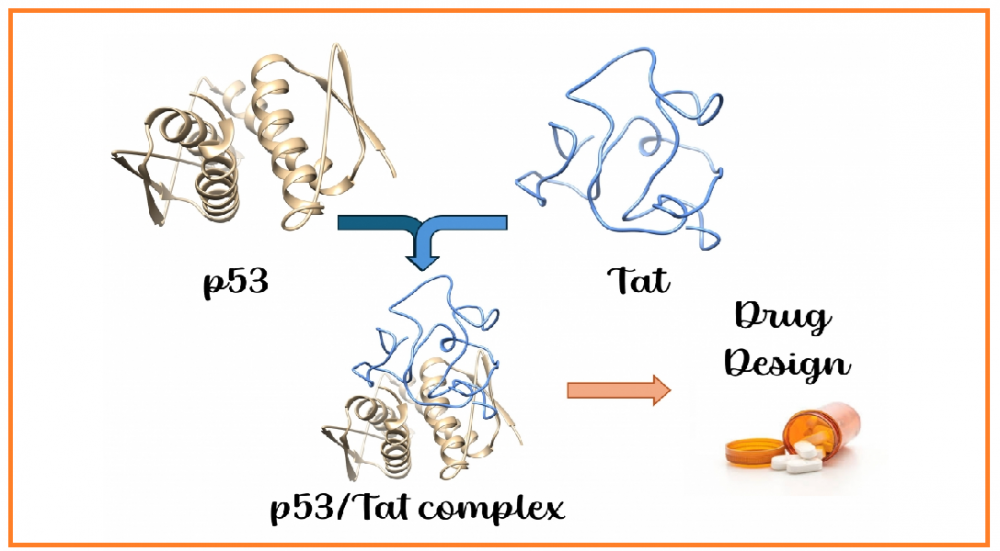Organic Communications
A scientific open access journal in the field of synthetic organic chemistry and polymersLATEST ARTICLES
Theoretical investigation of interactions between HIV-1 Tat and p53 proteins

HIV-1 Tat (transactivator of transcription) protein is the main arsenal of HIV, playing numerous roles during viral infection. This protein is intrinsically disordered, lacking well-defined secondary structures. Such structural plasticity allows HIV-1 Tat to interact with a wide range of proteins and biological molecules, ultimately leading to immune system collapse or severe tissue damage. Proteomic studies have previously revealed that p53, often referred to as the “guardian of the genome,” interacts with Tat through its tetramerization domain. Since p53 plays a pivotal role in determining cell fate, its interaction with Tat is of broad interest in the pathogenesis of HIV infection. Therefore, we investigated the complex formation between Tat and the tetramerization domain of p53 using molecular docking and molecular dynamics simulations. We believe that the results presented in this manuscript provide valuable insights for the development of novel therapeutic agents targeting the p53/Tat interaction.
DOI http://doi.org/10.25135/acg.oc.200.25.08.3618 Keywords HIV-1/2 Tat protein p53 molecular docking MD simulations protein-protein interaction Available online: October 20, 2025 DETAILS DOWNLOAD PDF © ACG Publications. All rights reserved.A catalyst-free and eco-friendly approach to synthesis of 1,8-naphthyridines via natural deep eutectic solvents

The use of deep eutectic solvents (DESs) not only promotes the reaction but also aligns with green chemistry principles due to their biodegradability, low toxicity, cost-effectiveness, and recyclability. A green and efficient one-pot, three-component synthesis of 2-amino-4-phenyl-1,8-naphthyridine-3-carbonitrile derivatives has been developed using lactic acid-based DESs. The reaction, involving 2-aminopyridine, aromatic aldehydes, and malononitrile, proceeds under mild conditions in a DES composed of lactic Acid, maltose, and amla (Indian gooseberry) Juice (3:1:3 molar ratio) without the need for any additional catalysts or additives. Among various DESs evaluated, this ternary mixture exhibited the highest catalytic activity, delivering products in good to excellent yields. The methodology offers notable advantages, including high atom economy, reduced reaction time, and elimination of hazardous solvents. The synthesized naphthyridine derivatives were structurally confirmed by FTIR, NMR, and HRMS analyses. This study highlights the potential of natural-product-based DESs as sustainable media for multicomponent heterocycle synthesis, with significant implications for the field of organic synthesis and green chemistry
DOI http://doi.org/10.25135/acg.oc.199.2507.3592 Keywords Multicomponent reactions deep eutectic solvents (DESs) 1,8-naphthyridine green synthesis 2-amino pyridine lactic acid Available online: October 20, 2025 DETAILS DOWNLOAD PDF © ACG Publications. All rights reserved.Ferric phosphate (FePO4): An efficient and reusable catalyst for synthesis of aryl-14H-dibenzo[a,j]xanthene derivatives under solvent-free conditions

A simple and efficient method has been developed for the synthesis of xanthene derivatives using various aromatic aldehydes and 2-naphthol under solvent-free conditions. In this procedure, ferric phosphate (FePO4) is used as an efficient and reusable heterogeneous Lewis acid catalyst for the synthesis of various derivatives of 14-aryl-14H-dibenzo[a,j]xanthene (3a-3m) in excellent yields (87-96%). The present method affords notable advantages such as short reaction time, simple workup procedure, reusability of the catalyst and high conversions of the products. All products have been confirmed by their melting points and spectroscopic techniques such as 1H NMR, 13C NMR, IR spectroscopy and mass spectrometry.
DOI http://doi.org/10.25135/acg.oc.198.2508.3606 Keywords 14-aryl-14H-dibenzo[a,j]xanthenes ferric phosphate (FePO4) heterogeneous Lewis acid catalyst aromatic aldehydes 2-naphthol solvent-free condition Available online: October 05, 2025 DETAILS DOWNLOAD PDF © ACG Publications. All rights reserved.

